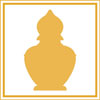Toxins, AyurVeda, and Health
From birth we accumulate toxins. Unless removed, these will eventually reach a level leading to health consequences.
Toxins are a key feature in the chronic illnesses prevalent today in modern living. So where are these toxins and how can they be minimised and removed?
Can we enjoy a relatively toxin-free life?
AyurVeda, the Indian science of natural health, describes two sources of toxins: external and internal.
External toxins are the most obvious: pollutants in the air and water, pesticides in the soil, and chemicals in processed foods for example.
Less obvious, but perhaps more damaging, are internal toxins produced by the body in response to: mental stress, lack of sleep, poor diet, and erratic lifestyle.
The Elephant in the Room: Ama – the Internal Toxin
AyurVeda physicians first came to the West thirty years ago. After giving their first few hundred consultations, they were asked what health problem they found most common in Western people. Their answer was poor digestion.
Thirty years on, visiting AyurVeda specialists say the problems, in order of importance, are: poor diet and digestion, irregular sleep and daily routine, and activities leading to mental stress.
AyurVeda regards the most dangerous ‘internal’ toxin to be the by-product of incomplete digestion.
This toxin is known as Ama in AyurVeda. It is a sticky substance which clogs the channels conveying nutrients and energy to the cells and tissues.
Ninety-nine percent of the population has never heard of Ama. Neither has their GP.
Ama comes in many varieties, some more reactive, some more mobile. It can eventually migrate all over the body and lodge itself throughout. This can lead to hazardous consequences, for example, when it blocks the flow of nutrients to the joints the conditions that are created can severely increase risk of arthritis.
Getting rid of Toxins – Easy if you know how
Many modern lifestyles are not healthy. As such, the number of toxins present within the body are increasing. Consequently, chronic diseases are the biggest problem facing society today. Modern allopathic medicine can’t deal with these diseases properly because the spread of toxins is a whole-body problem.
Some toxins are water-soluble and easier to eliminate. Others are fat-soluble and difficult to reach and remove.
There isn’t a magic pharmaceutical to get rid of ama. It needs a whole-body solution. Luckily AyurVeda has known about this problem for thousands of years.
To keep their kings (Rajas) in tip top health and able to make wise decisions for the benefit of the people, AyurVedic physicians of old administered a purification procedure, known as Panchakarma, at the change of seasons.
Detox for the Western World
AyurVeda Panchakarma treatment centres are springing up around the world as a result of a growing demand of people wanting to managed their own health. More informed dietary choices, regular exercise programmes, yoga, meditation, and detox treatments are all on the rise.
Many modern detox methods give patchy results, so it’s good to know why Panchakarma has been so successful for so long.
In the West, Panchakarma treatment is given residentially, typically, for between three and seven days. Prior to coming for treatment, you visit an AyurVedic practitioner for a personal health consultation and are advised on the length of Panchakarma you need and given the treatments you will receive.
You are also given a ‘home treatment’ programme to be followed for a few days before coming to the centre. This allows the process of purification to begin in a smooth and comfortable way. Maharishi AyurVeda Panchakarma treatment uses special herbalised oils to gently release the toxins from the body fats they are stored in.
Warm oils are applied all over the body in a synchronised AyurVedic massage sequence given by two treatment technicians, followed by a session in a steam cabinet where herbalised steam opens the pores to release the toxins gathered by the oils through the skin.
Toxins also gather in the eliminative channels and these are eliminated by a procedure known as basti.
During your time at the centre you are on a light, nourishing AyurVedic diet. There is opportunity to take plenty of rest and affords you time to learn more about AyurVeda or how to do Transcendental Meditation, if this interests you.
Afterwards, the practitioner will give you a ‘going home’ programme to continue the benefits you have gained. This includes advice about foods to eat to suit your body type, how and when to eat, and a daily routine you can follow to stay balanced.
The practitioner may also prescribe AyurVedic herbal supplements to provide any essential nutrients you may have been lacking or to support your digestion, sleep, and energy levels.
Typical Results
People find that after Panchakarma their thinking becomes clearer and feelings of wellbeing increase and persist. A lady who originally came for Panchakarma because she had longstanding eczema told me that after the first course of treatment it disappeared and never returned. For the past twenty years she has revisited the centre for her ‘annual health holiday’. She now has youthful, glowing skin.
For more information contact Maharishi AyurVeda Health Centre (MAHC) by sending an email to enquiries@ayurveda-rendlesham.co.uk.
We hope you found this article interesting and informative.

